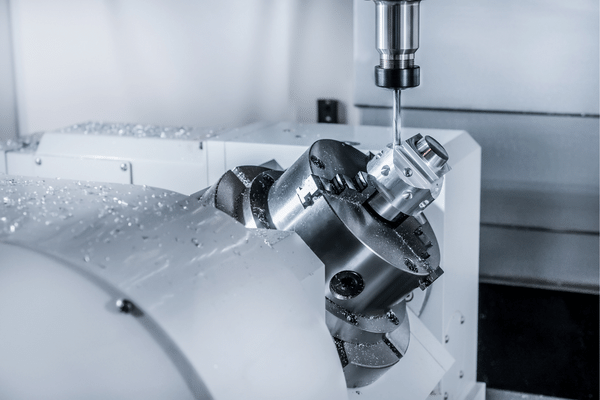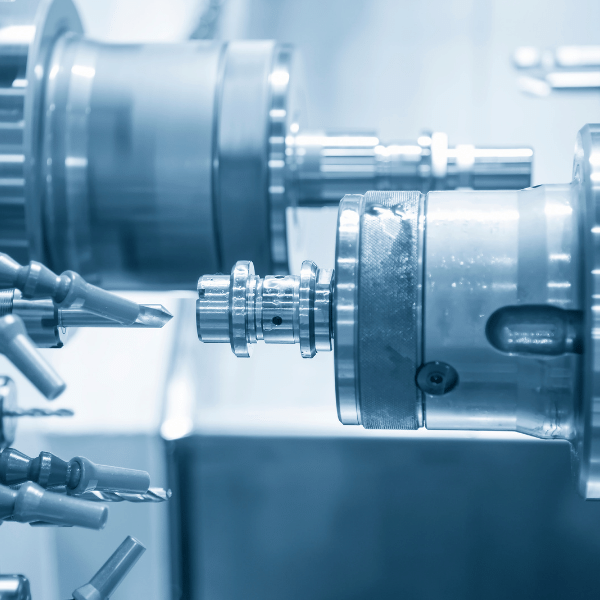CNC routers are a great tool for machining aluminum parts, but there are some things to consider before you get started. If you’re new to using a CNC router, here’s a guide to help you get started.
Choosing the Right CNC Router for Machining Aluminum
When choosing your machine, it’s important to remember that not all routers are made equal. Some routers can only handle small workpieces due to limited rigidity. In contrast, others are designed specifically for large workpieces and have special features like high-pressure coolant systems or automatic machining capabilities.
If you’ve never machined aluminum, it might be worth investing in a larger machine that can handle at least 20″ x 20″ x 20″ pieces of material. You don’t want to be limited by your equipment when working with aluminum!
Preparing the Workpiece for Machining
You’ll need to prepare the workpiece for machining by creating a flat surface on which your router will sit. This will help prevent wobble and ensure that all cuts come out perfectly straight every time! To do this, place the piece on some wooden blocks so that it sits off. A few inches above the table. Then, use your router with a straight bit to start routing away at the material until it’s perfectly flat. This will take time and patience, but it’s well worth it!
Once the workpiece is perfectly flat, you can move on to cutting it down to size. For example, if you’re making a box, you’ll want to measure and mark where your cuts should go. This will ensure that everything lines up perfectly when you assemble your project later on!
Once you’re happy with your measurements, it’s time to start cutting. To do this, place the workpiece on wooden blocks, so it sits off the table. A few inches above the table is ideal. Then, use your router with a straight bit to start routing away at the material until it’s perfectly flat. This will take time and patience, but it’s well worth it!
To machine aluminum parts with a CNC router, we need to pay attention to these points and get high-quality products.
Choose the right working tools for aluminum machining.
Machining aluminum is a process that requires specific tools and equipment. The following are some of the most important things to consider when choosing working tools for machining aluminum:
- The Shape of the Cut
One of the most important considerations when choosing working tools for machining aluminum is whether the tool will make a round or square cut. Round cuts are used for cylindrical shapes, such as tubes and pipes, while square cuts are used for flat surfaces, such as plates or bars.
- The Material Thickness of Aluminum
Aluminum can be machined with manual and computer numerical control (CNC) machines; however, choosing the correct working tool is important based on how thick your material will be is important. For example, if you want to machine an aluminum plate less than 0.3 inches thick, it would be best to use a manual milling machine instead of a CNC router because these machines are less expensive than their counterparts. They require less maintenance when compared with CNC routers.
- Feed Rate
Another important consideration when choosing working tools for machining aluminum is feed rate which refers to how fast your workpiece moves through an axis during each revolution around its axis point on a lathe or milling machine. Suppose you have a large piece of aluminum that needs to be machined. In that case, it’s best to use a high feed rate because this will ensure that your material is processed at an even pace rather than leaving gaps between each cut which can lead to unwanted inconsistencies in the final product.
Adjust the spindle speed and cutting feed rate.
The spindle speed is the rotational speed of the router bit. The cutting feed rate is the number of inches that a bit advances for every revolution of the router’s workpiece. Both of these values must be adjusted to achieve high-quality parts.
If you have a spindle that does not allow you to adjust its speed, use the highest possible value to make your cuts as smooth as possible. However, if you want to avoid creating heat in your material, adjust it to a value that allows for deeper cuts with less friction from friction between your bit and the workpiece.
Apply coolant for aluminum machining.
When machining aluminum, you need to pay close attention to the coolant. The coolant keeps the tool from overheating and clogging up with chips. Here are some tips for keeping your coolant flowing:
- Make sure that you have enough coolant in the tank. If there’s not enough, you’ll have to stop and refill it more often, leading to overheating and tool damage.
- Don’t use oil-based coolants on aluminum. Oil does not evaporate as quickly as water, so it will stay on your cutting tools longer than water would—and that can lead to premature wear on those tools (which means less accuracy).
- Use a good quality oil-free coolant that doesn’t leave any residue behind after it evaporates.





